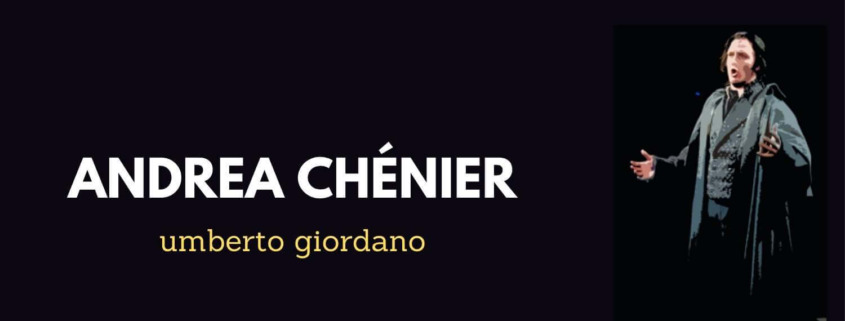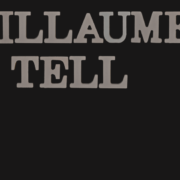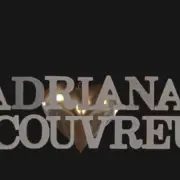UN DI ALL AZZURRO – eine Arie aus der Oper Andrea Chenier
Das Portrait von Giordanos Arie UN DI ALL AZZURRO SPAZIO
Lesen Sie interessante Fakten und hören Sie grossartige YouTube-Videos über die berühmte Arie „UN DI ALL AZZURRO SPAZIO“.
Die Arie – Handlung & Hintergrund
Die Arie stellt den Tenor vor einer physischen Herausforderung. Lange deklamatorische mächtige Passagen, teilweise in hohen Tonlagen, fordern den Tenor. Zudem dauert die Arie inklusive Rezitativ stolze 6 Minuten.
Die Arie beginnt mit dem Orchester im pianissimo. Chenier setzt dolcissimo mit einer lyrischen Melodie ein. Mehr und mehr geht die Arie in einen Monolog mit geringer tonlichen Spannbreite über.
Das Orchester wird zunehmender farbiger und intensiver. Der Tenor muss die Spannung mit grosser Gestaltungskraft während des Monologes aufrechterhalten.
Die Arie – der Text von UN DI ALL AZZURRO SPAZIO
Un dì all’azzurro spazio
guardai profondo,
e ai prati colmi di viole,
pioveva l’oro il sole,
e folgorava d’oro il mondo:
parea la terra un immane tesor,
e a lei serviva di scrigno il firmamento.
Su dalla terra a la mia fronte
veniva una carezza viva, un bacio.
Gridai vinto d’amor:
T’amo tu che mi baci,
divinamente bella, o patria mia!
E volli pien d’amore pregar!
Varcai d’una chiesa la soglia;
là un prete ne le nicchie
dei santi e della Vergine,
accumulava doni –
e al sordo orecchio
un tremulo vegliardo
invan chiedeva pane
e invano stendea la mano!
Varcai degli abituri l’uscio;
un uom vi calunniava
bestemmiando il suolo
che l’erario a pena sazia
e contro a Dio scagliava
e contro agli uomini
le lagrime dei figli.
In cotanta miseria
la patrizia prole che fa?
Sol l’occhio vostro
esprime umanamente qui
un guardo di pietà,
ond’io guardato ho a voi
sì come a un angelo.
E dissi: Ecco la bellezza della vita!
Ma, poi, a le vostre parole,
un novello dolor m’ha colto in pieno petto.
O giovinetta bella,
d’un poeta non disprezzate il detto:
Udite! Non conoscete amor,
amor, divino dono, non lo schernir,
del mondo anima e vita è l’Amor!
Stimmfach «Spinto Tenor»
Die Rolle des Chénier ist für einen Spintotenor (italienisch) respektive einen jugendlichen Heldentenor (deutsch) geschrieben. Die Stimme ist durch die kräftig-männliche charakterisiert und hat einen metallenen Glanz in der Höhe. Sie besticht durch mühelose Durchschlagkraft und Bewegelichkeit. In der Höhe kann der Spinto Tenor das Publikum mit Spitzentönen begeistern.
Grosse Interpreten der Arie UN DI ALL AZZURRO SPAZIO
Let’s start with Luciano Pavarotti’s interpretation . Before we get to the aria I would like to tell you a little anecdote about him and this aria, which I found in a book by Clemens Untereimer (Ein Bariton für alle Fälle). „I noticed that Pavarotti leaned in the first act on a small table with all his weight . He couldn’t stand that long, so he was happy to rest a bit. During the break I secretly took a look at the underside of the table – I was curious how the rather fragile looking table could withstand this tenor strain. I couldn’t believe my eyes and had to grin inevitably: On the underside of the table there was a piece of paper with the note „Attention, reinforce with Pavarotti“.
Andrea Chenier is one of Pavarotti’s key roles. His inerpretation is in a lyrical, warm tone. This dramatic role was not easy for a lyrical tenor like Pavarotti, and he only sang it for the first time at the age of 41.
Un di all azzuro (1) – Pavarotti / Chailly
The next one, by Enrico Caruso. It is very lyrical and sonorous, simply perfect.
Un di all azzurro (2) – Caruso
The third is vocally more powerful, it is sung by Mario del Monaco. He was one of the great tenors of the fifties and often a partner of Maria Callas. The opinions on Mario del Monaco’s singing art are divided into two camps. Del Monaco sings constantly in Forte, which can fatigue the listener, some people then called it «monotonous, brutal singing» or as his fans call it, the voice of a virile tenor who can impress the opera house. Also listen to a sample of del Monaco’s impressive organ in the blog «Die Walküren». Del Monaco’s attempt in early years with a singing teacher «to acquire a good piano and a mezza voce led to a serious vocal crisis, and the young tenor drew for himself the consequence of not relying anymore to singing teachers and to trust his talent for loud singing». (Fischer, grosse Stimmen). However, Chenier is certainly one of his best recordings, see for yourself if you like the voice.
Un di all azzurro (3) – delMonaco
Something similar can be said about Franco Corelli, the famous contemporary of del Monaco. Fischer (grosse Stimmen): «His squillo seemed to cut through steel doors…One will wait in vain for subtle effects, for valeurs and shades, as the tenor of the victorious high-altitude beam and steel, he has hardly any equal». As with del Monaco, Andrea Chenier was one of his best roles. Kesting (great singer) commented on his Andrea Chenier recording: «Even in the complete recording under Santini, Corelli’s singing is not free of mistakes, and yet there is a kind of Errol Flynn on stage, a bold poser». Judge for yourself.
Un di all azzurro (4) – Corelli/Santini
Die nächste Aufnahme ist von Jonas Kaufmann. 2015 hat er diese Rolle zum ersten gesungen und ein fulminantes Debut gezeigt. Seine dunkle, intensive Stimme passt gut zu dieser Rolle und speziell im deklamatorischen Teil (zB 3.03, un uom vi calunniava bestemmiando il suolo) überzeugt er. Hören und sehen Sie ihn in einer TV Produktion der Wiener Staatsoper.
Un di all azzurro (5) – Kaufmann
Peter Lutz, opera-inside, der online Opernführer zu der Arie „UN DI ALL AZZURRO SPAZIO“ aus der Oper Andrea Chénier.











Hinterlasse einen Kommentar
An der Diskussion beteiligen?Hinterlasse uns deinen Kommentar!